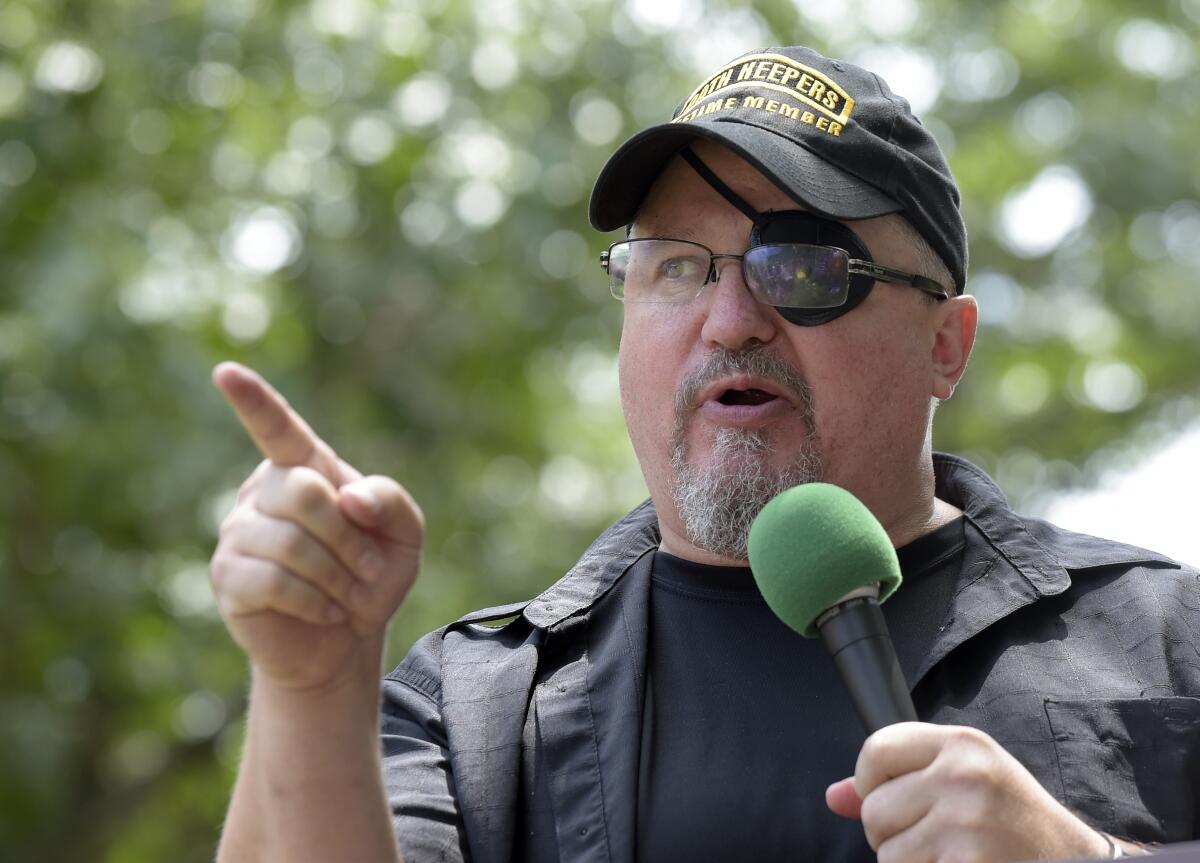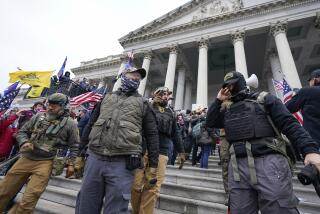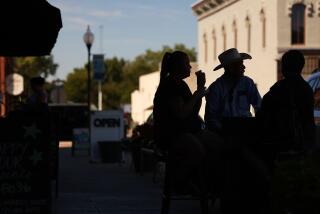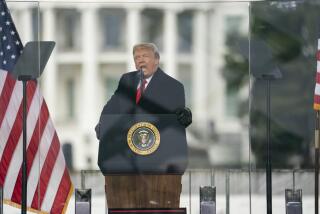From Yale to jail: Oath Keepers founder Stewart Rhodes’ path

PHOENIX — Long before he assembled one of the largest far-right antigovernment militia groups in U.S. history, before his Oath Keepers stormed the U.S. Capitol on Jan. 6, 2021, Stewart Rhodes was a promising Yale Law School graduate.
He secured a clerkship on the Arizona Supreme Court after his time as an Army paratrooper was cut short by a training accident. The job was one more rung up from a hardscrabble beginning. But rather than fitting in, Rhodes came across as angry and aggrieved.
Rhodes alienated his moderate Republican boss and eventually left the job. Since then he has ordered his life around a thirst for greatness and deep distrust of government.
He turned to forming a group rooted in antigovernment sentiment, and his message resonated. He gained followers as he went down an increasingly extremist path that would lead to armed standoffs. It culminated last year, prosecutors say, with Rhodes engineering a plot to violently stop Democrat Joe Biden from becoming president.
Rhodes, 57, will be back in court Tuesday, but not as a lawyer. He and four others tied to the Oath Keepers are being tried on charges of seditious conspiracy, the most serious criminal allegation leveled by the Justice Department in its far-reaching prosecution of rioters who attacked the Capitol.
The trial will put a spotlight on the secretive group Rhodes founded in 2009 that has grown to include thousands of claimed members and loosely organized chapters across the country, according to Rachel Carroll Rivas, interim deputy director of research with the Southern Poverty Law Center’s Intelligence Project.
For Rhodes, it will be a position at odds with the role of greatness that he has long envisioned for himself, said his estranged wife, Tasha Adams.
“He was going to achieve something amazing,” Adams said. “He didn’t know what it was, but he was going to achieve something incredible and earth-shattering.”
Rhodes was born in Fresno. He shuttled between there and Nevada, sometimes living with his mother and other times with grandparents who were migrant farmworkers.
Rhodes joined the Army fresh out of high school and served nearly three years before he was honorably discharged in January 1986 after breaking his back in a parachuting accident. He recovered and was working as a valet in Las Vegas when he met Adams in 1991. He was 25, she was 18.
He had a sense of adventure that was attractive to a young woman brought up in a middle-class, Church of Jesus Christ of Latter-day Saints family.
Adams’ family had set aside money for her to go to college, but after their wedding Rhodes decided he should be the first to attend school. He told her she would need to quit her job teaching ballroom and country dancing and instead support them both by working full-time as a stripper so he could focus on doing an excellent job in school, according to Adams. They married, but she found stripping degrading and it clashed with her conservative Mormon upbringing, she said.
She quit when she got pregnant with their first child, and the couple moved back in with her family.
Rhodes’ lawyer declined to make him available for an interview and Rhodes declined to answer a list of questions sent by the Associated Press.
He finished college at the University of Nevada, Las Vegas, went to work in Washington as a staffer for libertarian-leaning Republican congressman Ron Paul, and later attended Yale. Paul did not respond to a request for comment.
After the Arizona clerkship, the family bounced to Montana and back to Nevada, where Rhodes worked on Paul’s presidential campaign in 2008. That’s when Rhodes also began to formulate his idea of starting the Oath Keepers.
He formally launched the Oath Keepers on April 19, 2009, in Lexington, Mass., where the first shot in the American Revolution was fired.
The group’s stated goal was to get past and present members of the military, first responders and police officers to honor the promise they made to defend the Constitution against enemies. The Oath Keepers issued a list of orders that its members wouldn’t obey, such as disarming citizens, carrying out warrantless searches and detaining Americans as enemy combatants in violation of their right to jury trials.
Rhodes harnessed the growing power of social media to fuel the Oath Keepers’ growth during the presidency of Barack Obama. Membership rolls leaked last year included some 38,000 names, though many people on the list have said they are no longer members or were never active participants. One expert last year estimated membership to be a few thousand.
The internal dialogue was often darker about what members perceived as imminent threats, especially to the Second Amendment, and preparing to fight back, according to Sam Jackson, author of the book “Oath Keepers: Patriotism and the Edge of Violence in a Right-Wing Antigovernment Group.”
Showdowns with the government began in 2011 in the small western Arizona desert town of Quartzsite, where local government was in turmoil. A couple of years later, Rhodes started calling on members to form “community preparedness teams,” which included military-style training.
When Donald Trump’s political star took off, the group’s rhetoric began to shift. And when Biden won the 2020 election, prosecutors say, Rhodes started preparing for battle. Rhodes and the Oath Keepers spent weeks plotting to block the transfer of power, amassing weapons and setting up “quick reaction force” teams with weapons to be on standby outside the nation’s capital, prosecutors say.
On Jan. 6, 2021, authorities say, two teams of Oath Keepers stormed the Capitol alongside hundreds of other angry Trump supporters.
Rhodes is not accused of going inside the Capitol, but he was seen outside the building after the riot with several members who did enter, prosecutors have said.
Defense lawyers have argued the militia group came to Washington only to provide security for right-wing figures at events before the riot.
The case has dealt a major blow to the Oath Keepers. But that doesn’t mean the ideas that Rhodes promoted have faded away.
“He came up with a blueprint that is going to be used in the future by people we don’t even know about,” said Jason Van Tatenhove, a former spokesman for the group. “I think it’s very important for us to pay attention.”
Whitehurst reported from Washington.
More to Read
Sign up for Essential California
The most important California stories and recommendations in your inbox every morning.
You may occasionally receive promotional content from the Los Angeles Times.










